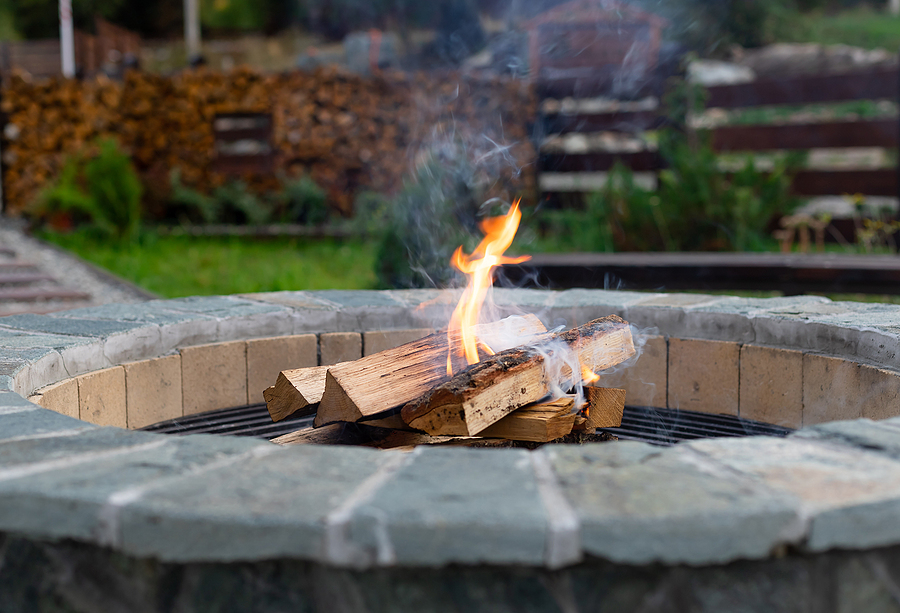How to Enjoy a Backyard Fire Pit Safely

The months that homeowners most enjoy spending time outdoors are almost here. With their impending arrival, the New York City Council recently passed legislation that relaxes restrictions on open flames (including fire pits) in several zones.
Whether or not you live in an area that allows fire pits, you might enjoy gathering around one with neighbors or friends at some point this summer. Both homeowners and guests should take certain precautions to stay safe.
Here are a few answers to frequently asked questions and useful safety tips for anyone using a backyard fire pit in the New York City area.
Are Backyard Fire Pits Illegal in NYC?
Until recently, fire pits were “strictly prohibited and illegal in New York City.” In February 2022, the City Council passed a law that allows “backyard fires in neighborhoods where there is detached or semidetached housing” in zones R1, R2, and R3.
The legislation states that homeowners must follow fire safety precautions while using a fire pit. This includes placing the fire pit at least 10 feet away from combustible materials and closing all nearby doors and windows.
My Homeowners Insurance Covers Fire Damage. Would It Cover a Fire Pit?
Most homeowners insurance policies specify intentionality in fire damage clauses. If your policy states that it doesn’t cover fires started intentionally, it will not cover fire damage originating from a fire pit.
If a guest or member of your family trips and falls near the fire pit, or suffers burns caused by your fire pit, medical expenses might be covered, depending on your policy’s liability protection.
Double-check with your insurance broker to ensure you have the right coverage you need and that all of your property—including unattached structures like a tool shed—are covered under your homeowners insurance policy.
The Danger of Smoke vs. Open Flames
When using a fire pit in your backyard, monitor the amount of smoke produced, in addition to open flames and embers.
The National Fire Protection Agency states that smoke inhalation is the most common cause of fire-related deaths. Dangerous chemicals in smoke can be absorbed into the skin through vapor or inhaled by people and wildlife nearby.
The following steps will reduce the amount of smoke produced by a fire pit:
- Avoid burning green, leafy branches. Vegetation that is still green produces a lot of smoke. The high moisture content also makes it an inefficient fuel source.
- Use long-stemmed matches, natural tinder and kindling, and hardwood logs. The best tinder and kindling are leaves and bark that have dried out for at least six months. Hardwoods like oak, ash and hickory produce less smoke than softwoods, such as pine and cedar.
- Do not use paper, cardboard, magazines, newspapers or particleboard as kindling. The ink or chemicals used to manufacture these products release toxic or excess smoke when burned. Instead, choose dried bark, twigs, long-stemmed matches or other materials that burn cleanly.
- Purchase a smokeless fire pit. If a member of your family has a health condition, smokeless fire pits are the best option to avoid smoke inhalation hazards.
Backyard Fire Pit Safety Tips
Fire pits are a wonderful way to enjoy your backyard, meet with friends, and spend time outdoors when the weather is great.
These tips can help make the time you spend with family and friends both memorable and safe:
- Place your fire pit at least 10 feet away from trees, structures, shrubs or decks. Position seating at least 7 feet away from open flames.
- Close all nearby doors and windows.
- Make sure logs and kindling fit inside the fire pit and don’t hang off the edge of the pit.
- At least one adult should be present and watching the open flames at all times.
- Monitor the wind. Extinguish the fire if you notice the wind is spreading embers or smoke.
- Avoid using lighter fluid, gas or kerosene to light or rekindle an open flame in a fire pit.
- Keep a garden hose, bucket of sand, or Class B or C dry-chemical fire extinguisher nearby in case you need to extinguish the flames quickly.
- When everyone is ready to go back inside, shovel ashes over the embers and then douse them with water. Embers and wood can retain heat for days, so repeat this process until you’re sure the fire is out. Look for any stray embers or sparks, and listen for sizzling sounds.
If you have any questions about a fire pit’s impact on a homeowners insurance policy, please call us at 877-576-5200.

